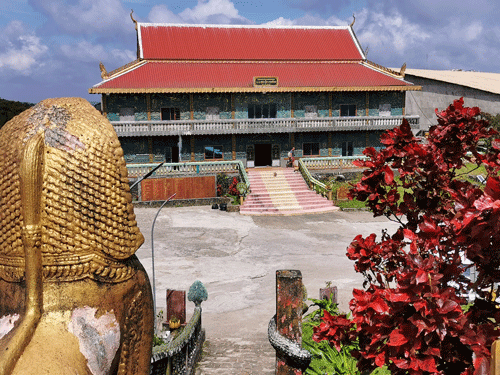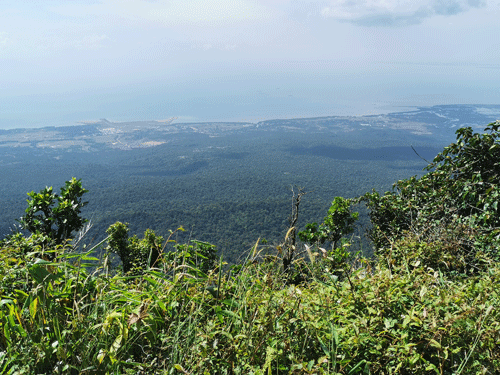Just outside of Kampot, Bokor was established by the French as a hill station 100 years ago. Climb up and up, via a winding road, into the National Park.
At the top, you'll find a number of interesting sights, spread over quite a large area. One of the first you come to is an old royal summer residence, the Black Palace, named for the black wood of its construction. Built for King Sihanouk, the "palace" is more of a modest holiday cottage, now covered in orange lichen and graffiti.
 |
| The ruins of the Black Palace |
 |
| Orange lichen on the Black Palace |
Deeper into the park, there are plenty of other notable historical buildings to explore, including the Catholic church. The area saw considerable action between the Vietnamese and the Khmer Rouge during the war, with soldiers using the church as cover. Tour guides will eagerly point out bullet holes in the walls.
 |
| Old Catholic church |
The most famous of the historical buildings was Le Bokor Palace Hotel and Casino, but it was being redeveloped when I visited, with plans to turn it into a new 5 star hotel. Which unfortunately meant it was fenced off, so the only picture I have is a quickie taken from my bus window as we passed.
 |
| Le Bokor Palace Hotel and Casino |
Speaking of development, the "National Park" status hasn't stopped massive new construction projects being built in the park. There's a massive new casino and a convention centre the size of an airline hanger, and plenty of new condo developments, dotting the landscape like carbuncles.
Beyond the ruins, you can visit a waterfall (small and non-impressive in the dry season), and attractive temples built next to a viewpoint.
If you have your own wheels, it's a fun place to explore on a day trip. Without your own wheels, you can find inexpensive tour buses in Kampot.






No comments:
Post a Comment